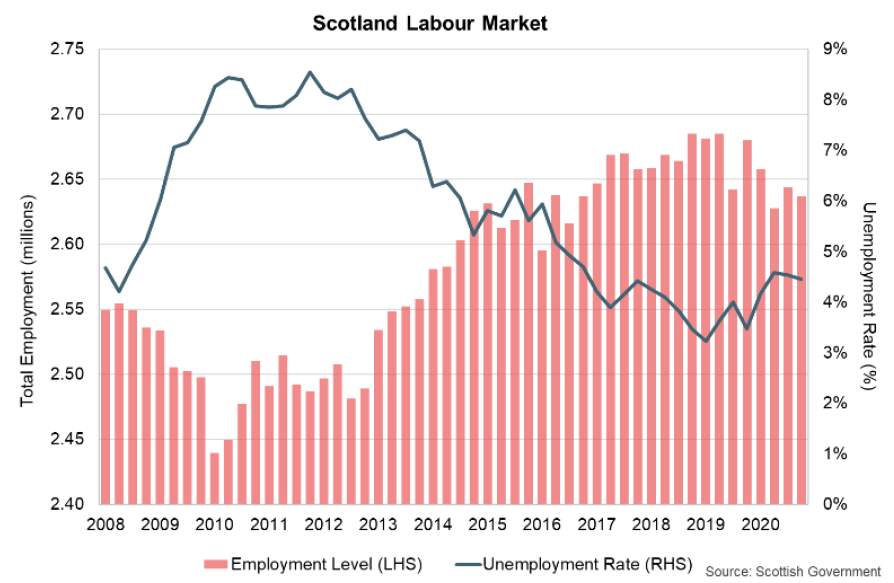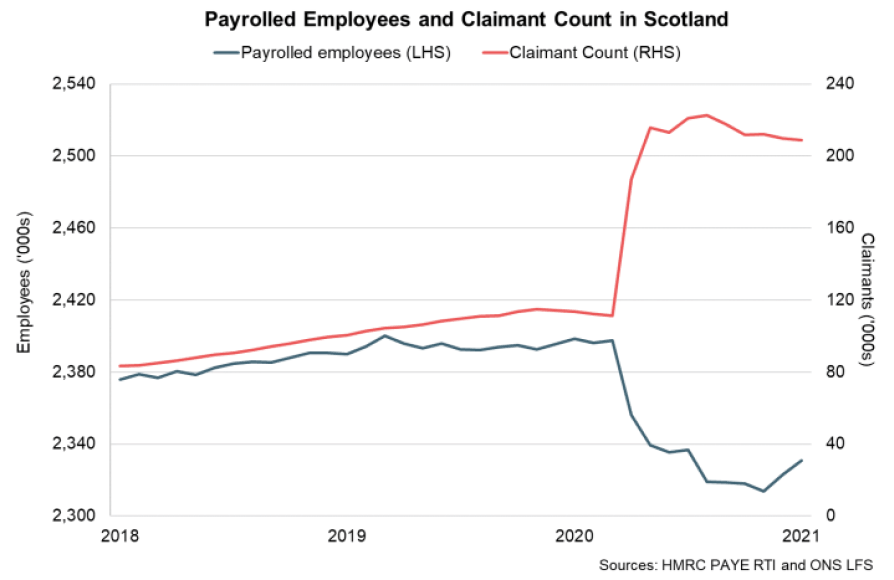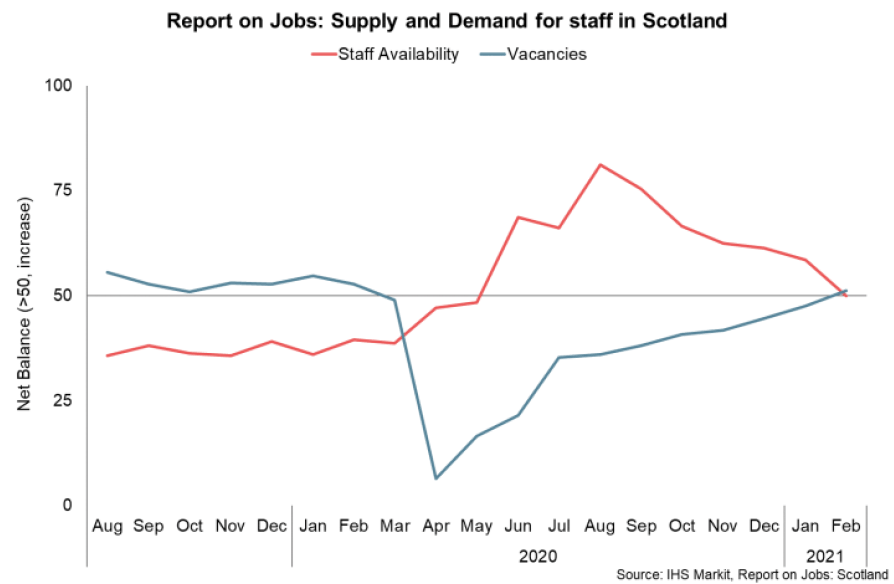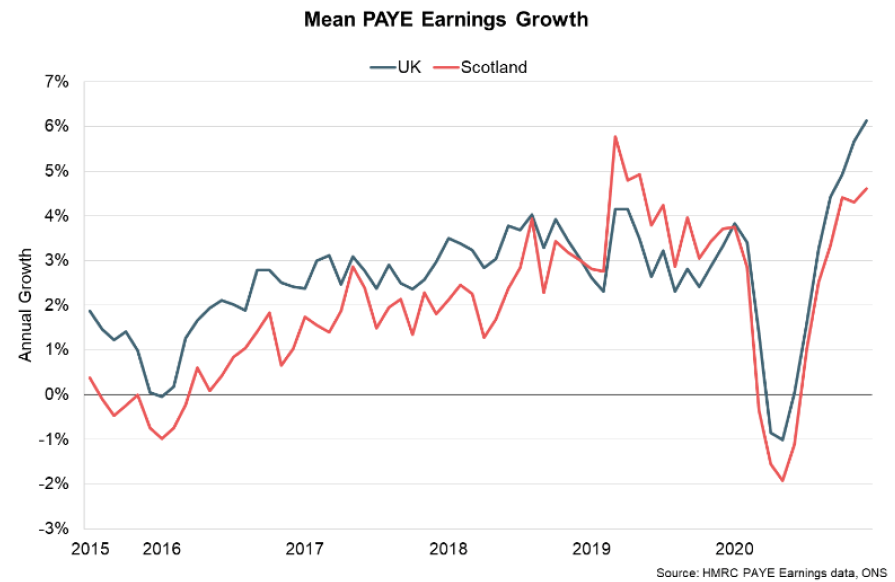Monthly economic brief: March 2021
Summary of latest key economic statistics, forecasts and analysis on the Scottish economy.
This document is part of a collection
Labour Market
The furlough scheme has continued to provide significant support to the labour market with the number of employment on furlough increasing as restrictions have tightened.
Coronavirus Jobs Retention Scheme (CJRS) and Self Employment Income Support Scheme[10]
- The CJRS has been supporting the retention of jobs and incomes since March 2020 and the recent UK budget announced that the scheme will continue to provide support until the end of September 2021.
- In January, 362,300 employments (14.9% of eligible employments) in Scotland were furloughed. This is lower than the 421,200 employments (17%) furloughed at the end of July, however has risen each month from the low of 195,200 (8%) at the end of October and rose by 73,400 over the month from December.

- The sectors with the highest number of employments furloughed across Scotland were Accommodation and food services (91,400, 25.2% of all employments furloughed in Scotland), Wholesale and retail (70,100, 19.3%) and Arts, entertainment and recreation (26,800, 7.4%).
- More recent Scottish Government ONS BICS data suggests the furlough take-up rate continued to increase in February with an estimated 67.2% of businesses in Scotland having staff on furlough and supporting 20.8% of the workforce.[11]
- The Self Employed Income Support Scheme (SEISS) has also continued to provide critical support to the labour market with the third SEISS grant opening on 30 November. By the end of January, 131,000 claims in Scotland had been made to the third SEISS. This represents 64% of the eligible population, with an average claim of £2,800. By sector, take-up rate has been highest for Transportation and Storage (78%), Education (73%) and Construction (71%).
Official labour market statistics
- The latest labour market statistics cover the period October to December when regional restrictions were introduced and businesses continued to receive CJRS and SEISS support.
- In October to December, the employment rate was 73.7% (down 1.3 percentage points over the year),[12] the unemployment rate was 4.5% (up 1.0 percentage point of the year) and the inactivity rate was 22.8% (up 0.6 percentage points of the year). The young person's (16 – 24 years) unemployment rate[13] was 9.7%, up 2.0 percentage points over the year.

- The headline labour market indicators continue to only show a partial picture of the labour market as people on furlough are considered employed. Wider labour market indicators have remained relatively stable in recent months, however continue to signal challenges that have emerged in the labour market during the pandemic.
PAYE payrolled employment and Claimant Count
- The more timely Pay As You Earn (PAYE) Real Time Information data show that the number of payrolled employees in Scotland (2.33 million) and the UK as a whole (28.3 million) has fallen sharply over the past year.
- In January, payrolled employees increased by c.7,800 (0.3%) in Scotland (UK: 0.3%). However, compared to February 2020, the number of payrolled employees has fallen c. 65,400 (-2.7%) in Scotland (UK: -2.5%).[14]

- Scotland's Claimant Count (the number of claimants of Job Seekers Allowance and claimants of Universal Credit claiming principally for the reason of being unemployed) was 208,800 in January and had decreased by 0.4% over the month.
- However, while the claimant count has been relatively stable since May, it remains 96,500 (86%) higher than in February, signalling that the number of people that are unemployed or employed with low income and/or low hours has increased significantly during the pandemic.[15]
Demand for staff in Scotland
- While the furlough scheme continues to provide significant support to the labour market, the IHS Markit RBS Report on Jobs survey for February has signalled increased stability in recruitment activity at the start of 2021.[16]

- Permanent job placements fell throughout 2020, however rose slightly over January and February alongside temporary staff placements. More broadly, the decline in vacancies has gradually stabilised alongside the increases in staff availability, which had been linked to increased redundancies over the past year.
Earnings
- Despite the protection offered to the labour market through the furlough scheme, earnings fell at the beginning of the pandemic. Between March and June, PAYE mean monthly pay fell for four consecutive months compared to the previous year. It returned to growth in July, and strengthened through the third quarter. Latest data for December, suggests the rate of growth has continued to strengthen, though has stabilised relative to the third quarter. Mean monthly pay in December was £2,453, a 4.6% increase from December 2019, while UK annual earnings growth continued to accelerate to 6.1%.[17]

- While the mean annual earnings growth rate has rebounded in the second half of 2020, the picture is complex and caution needs to be used in interpreting the figures, particularly in light of the fall in the number of payrolled employees. There are compositional effects (e.g. by sector and across income levels) underlying the data which suggest that not all parts of the labour market have experienced the same rebound as the mean rate implies.
Contact
Email: OCEABusiness@gov.scot
There is a problem
Thanks for your feedback